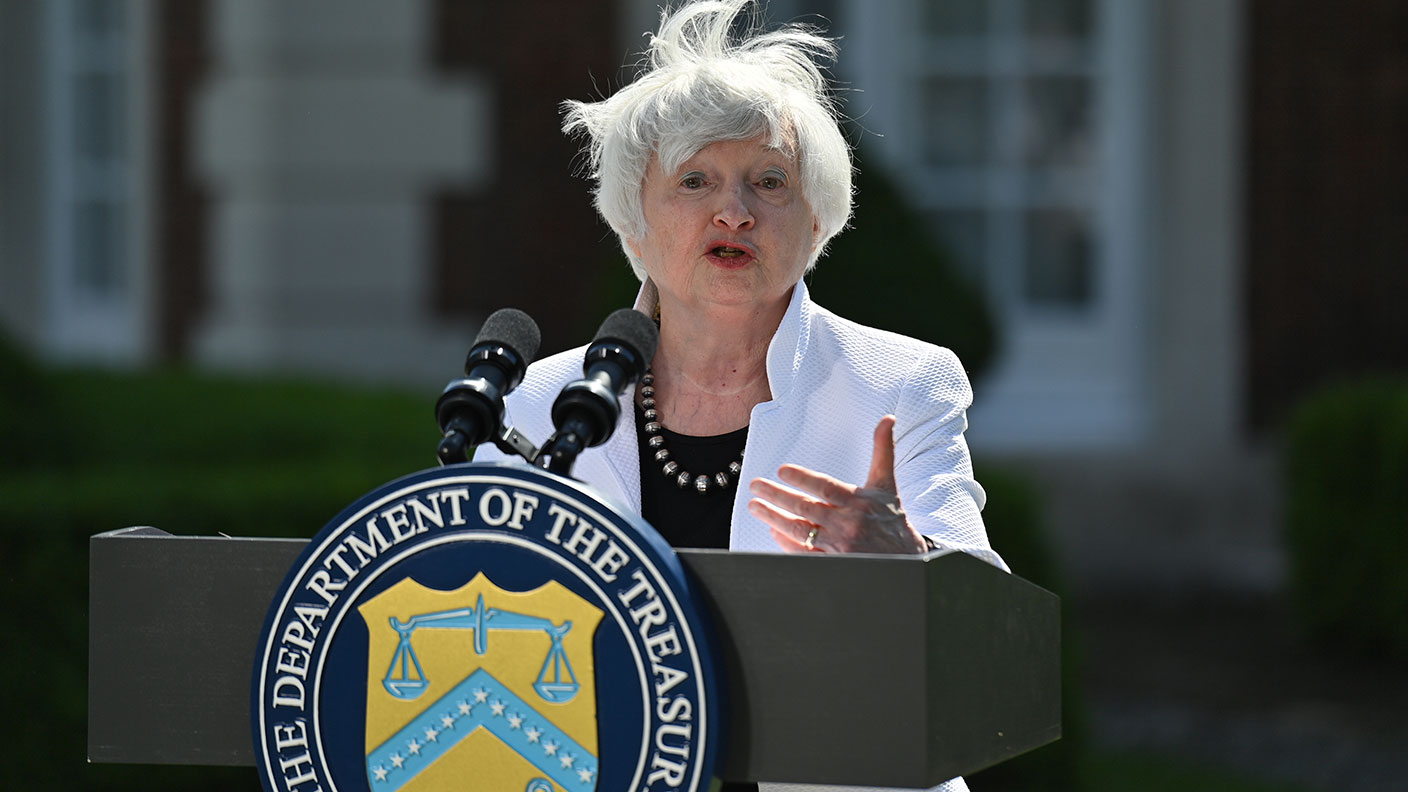Why markets don’t really mind weak US employment data
The latest US employment data was worse than expected. And while the dollar took a knock, the stockmarket rallied. John Stepek explains why markets are so relaxed.


During the Covid-19 pandemic, one of the world’s most important economic indicators lost a lot of its ability to move markets.
US non-farm payrolls data – the monthly employment report – has long been one of the most closely-watched releases available.
The US consumer is the world’s single most potent economic force. So their employment conditions are important for the entire global economy.
MoneyWeek
Subscribe to MoneyWeek today and get your first six magazine issues absolutely FREE

Sign up to Money Morning
Don't miss the latest investment and personal finances news, market analysis, plus money-saving tips with our free twice-daily newsletter
Don't miss the latest investment and personal finances news, market analysis, plus money-saving tips with our free twice-daily newsletter
That went by the wayside during Covid as the data was so hard to interpret.
But as we recover, that’s changing. US payrolls are now widely watched again.
So what did Friday’s figures tell us about the pace of recovery?
US employment figures were worse than expected
The US non-farm payrolls data for May came out on Friday. It revealed that the US economy added another 559,000 jobs for the month.
In the normal scheme of things, that’s a huge amount. But, of course, we’re not in the normal scheme of things. We’re recovering from a pandemic in which equally huge numbers of people lost their jobs. Now that the economy is re-opening, expectations are high for re-hiring.
As Paul Ashworth of Capital Economics points out, given that employment is still 7.6 million below its peak before the pandemic, at this pace, “it would take more than 12 months... to fully eradicate the shortfall.”
That gives you some idea of why markets had expected even more vigorous recovery in the jobs market. So they were disappointed when jobs came in below the hoped-for 675,000.
Yet at the same time, wages rose more strongly than expected. Ashworth notes that the 0.5% month-on-month gain (versus 0.2% forecast) was “even stronger than it looks” because it’s probably being dragged down by the return of lower-paid restaurant staff. It all “suggests that the increasingly acute labour shortages are translating into rapid wage growth.”
The market reaction was telling. The US dollar – which had been rebounding somewhat from an important technical level (read more on that here from Dominic) – immediately took a knock. Stockmarkets meanwhile, picked up a little.
Why? If employment is weak, it means the Federal Reserve, America’s central bank, is going to be very wary about raising interest rates or removing stimulus. At the same time, a bit of wage inflation is no bad thing – the US economy is heavily reliant on consumer spending, so putting more dollars in people’s pockets can’t hurt as long as inflation overall remains under control (which is a different matter, of course).
In other words, it means the “Goldilocks” scenario where the economy is “not too cold, not too hot” gets to continue for a bit longer.
But what about the longer run?
The inflation story is still intact
On that front, it’s interesting to hear what Janet Yellen – formerly the head of the Fed, and now the head of the US Treasury – had to say at the weekend.
She says that the US should push on with its public spending package, even if it ends up pushing inflation and thus interest rates higher: “If we ended up with a slightly higher interest rate environment it would actually be a plus [from] society’s point of view and the Fed’s point of view,” she told Bloomberg.
“We’ve been fighting inflation that’s too low and interest rates that are too low for a decade... if this helps a little bit to alleviate things then that’s not a bad thing – that’s a good thing.”
To be clear, this is not an argument for higher interest rates, as some seem to assume; this is more an argument that it’s still best to ignore concerns about higher inflation. This is an argument to a) allow the government to spend right now (in Yellen’s telling, anyway) and b) focus on employment rather than what inflation’s doing.
As I’ve said before, you don’t need to have interest rates locked to the zero-line to continue with loose monetary conditions. You just need central banks to be raising rates more slowly than inflation is rising. It’s about being “behind the curve” rather than “ahead of the curve”.
At some point, of course, the Fed might have to take action to ensure that markets remain sufficiently behind the curve (which is where things like “yield curve control”, or forced institutional buying of bonds, comes in).
But rate rises in and of themselves do not necessarily constitute a massive tightening of monetary conditions.
More importantly, Yellen remains relaxed – or perhaps complacent – about the threat of inflation. Firstly, she thinks it’s transitory, arguing that any “spurt” in prices will fade away next year, reports Bloomberg.
Secondly, she reckons that central bankers can cope even if inflation does stick around. “I know that world – they’re very good. I don’t believe they’re going to screw it up.”
That level of faith is striking, given what I’d argue is the absence of anything substantive to back it up. But the point is the politics rather than the reality. And for now, the focus is very much on employment and the economy, rather than hypervigilance about inflation.
In turn, that means the “return of inflation” story remains very much intact. The only real question is how quickly it can return and how long it can remain before central bankers do start to worry.
That’ll be a big deal when it happens. But we’re a while away yet.
If you want to learn more about what all of this means for your portfolio, it’s a topic we cover regularly in MoneyWeek magazine. Get your first six issues free here.
Get the latest financial news, insights and expert analysis from our award-winning MoneyWeek team, to help you understand what really matters when it comes to your finances.
John Stepek is a senior reporter at Bloomberg News and a former editor of MoneyWeek magazine. He graduated from Strathclyde University with a degree in psychology in 1996 and has always been fascinated by the gap between the way the market works in theory and the way it works in practice, and by how our deep-rooted instincts work against our best interests as investors.
He started out in journalism by writing articles about the specific business challenges facing family firms. In 2003, he took a job on the finance desk of Teletext, where he spent two years covering the markets and breaking financial news.
His work has been published in Families in Business, Shares magazine, Spear's Magazine, The Sunday Times, and The Spectator among others. He has also appeared as an expert commentator on BBC Radio 4's Today programme, BBC Radio Scotland, Newsnight, Daily Politics and Bloomberg. His first book, on contrarian investing, The Sceptical Investor, was released in March 2019. You can follow John on Twitter at @john_stepek.
-
 Football fans issued warning over ticket scams ahead of 2026 World Cup
Football fans issued warning over ticket scams ahead of 2026 World CupSantander customers lost more to football scams in the first six months of 2025 compared to the same period in 2024, when total losses surged due to the Euros
-
 Nationwide fined £44 million over “inadequate” anti-money laundering systems
Nationwide fined £44 million over “inadequate” anti-money laundering systemsFailings in Nationwide’s financial crime processes between October 2016 to July 2021 meant one criminal was able to deposit £26 million from fraudulent Covid furlough payments in just eight days.
-
 UK wages grow at a record pace
UK wages grow at a record paceThe latest UK wages data will add pressure on the BoE to push interest rates even higher.
-
 Trapped in a time of zombie government
Trapped in a time of zombie governmentIt’s not just companies that are eking out an existence, says Max King. The state is in the twilight zone too.
-
 America is in deep denial over debt
America is in deep denial over debtThe downgrade in America’s credit rating was much criticised by the US government, says Alex Rankine. But was it a long time coming?
-
 UK economy avoids stagnation with surprise growth
UK economy avoids stagnation with surprise growthGross domestic product increased by 0.2% in the second quarter and by 0.5% in June
-
 Bank of England raises interest rates to 5.25%
Bank of England raises interest rates to 5.25%The Bank has hiked rates from 5% to 5.25%, marking the 14th increase in a row. We explain what it means for savers and homeowners - and whether more rate rises are on the horizon
-
 UK inflation remains at 8.7% ‒ what it means for your money
UK inflation remains at 8.7% ‒ what it means for your moneyInflation was unmoved at 8.7% in the 12 months to May. What does this ‘sticky’ rate of inflation mean for your money?
-
 Would a food price cap actually work?
Would a food price cap actually work?Analysis The government is discussing plans to cap the prices of essentials. But could this intervention do more harm than good?
-
 Is my pay keeping up with inflation?
Is my pay keeping up with inflation?Analysis High inflation means take home pay is being eroded in real terms. An online calculator reveals the pay rise you need to match the rising cost of living - and how much worse off you are without it.
